Afghan War Rugs Come to Berlin
From 26 February to 20 March 2015, Wild Teppich- und Textilkunst in Berlin-Mitte will show selected Afghan war rugs, woven in the period between the Soviet occupation of Afghanistan in the 1980s through to almost the present day. These rugs shock through juxtaposing the beauty of traditional crafts and war-related imagery. Thirty-five years of war have shaped Afghan civilisation and destroyed large parts of the country and its rich culture. In these rugs one sees tanks, helicopters, warplanes, AK47s, grenades and mines, symbols of the everyday horrors of war, in place of traditional, mainly floral, decorative elements. The rugs are not only exceptional collector’s items, but also the subject of investigations and exhibitions in galleries and museums around the world. Thomas Wild’s current exhibition features selected pieces from Till Passow’s collection of Afghan war rugs, accompanied by a catalogue by Prof. Dr. Jürgen Wasim Frembgen, chief curator and head of the Oriental department at the Five Continents Museum in Munich.
Wild Teppich- und Textilkunst Gipsstraße 12/Sophie-Gips-Höfe, 10119 Berlin, Germany.
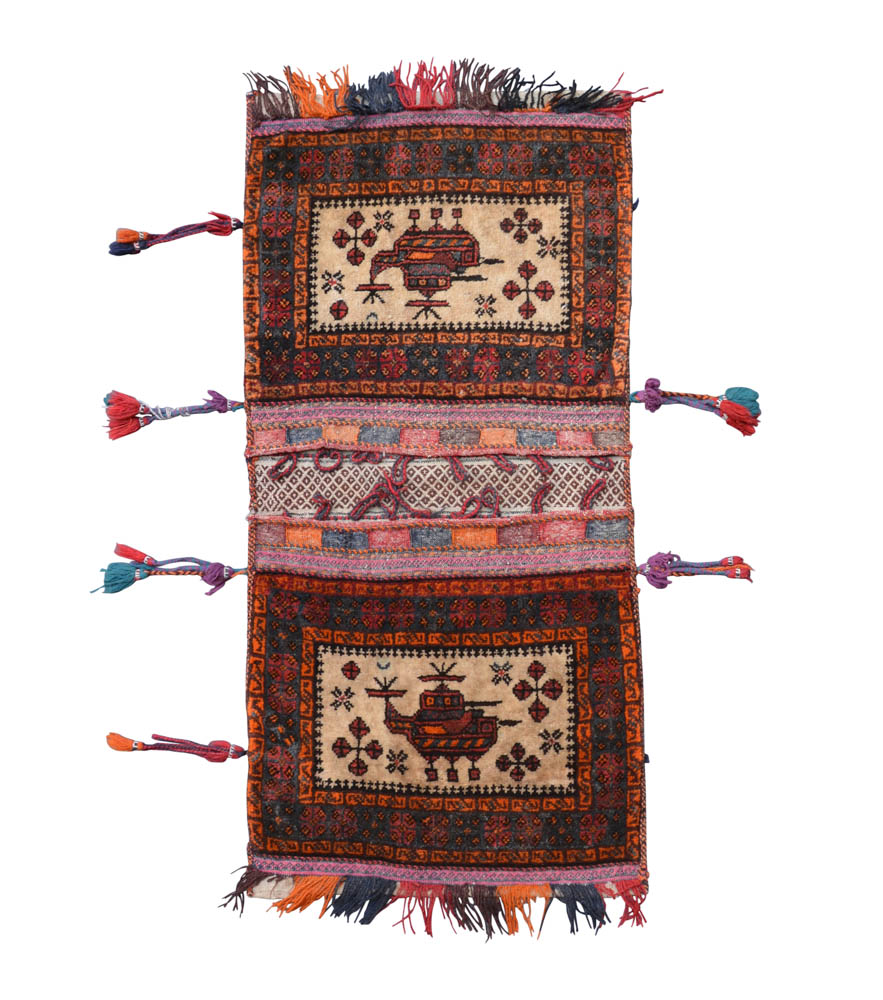
Saddle bag with attack helicopters , Taymani/West Afghanistan , 114 cm x 53 cm (approx. 3′ 9″× 1′ 9″) Woven in one piece, this saddle bag (khorjin) for horses or donkeys has loops in the middle to close the two openings in the bag. An attack helicopter and various cross shapes are depicted on a white ground in the centre of each bag face. A particularly striking feature is the wide, triple border, which makes each bag face look like a framed picture. Helicopters are one of the primary motifs in Afghan war rugs in addition to tanks, fighter- bombers, missiles, and machine guns. The saddle bag shown here is a rare example of this type of motif seeping into and being transferred to textile objects for everyday use. As a single motif, the attack helicopter takes on a decorative effect.
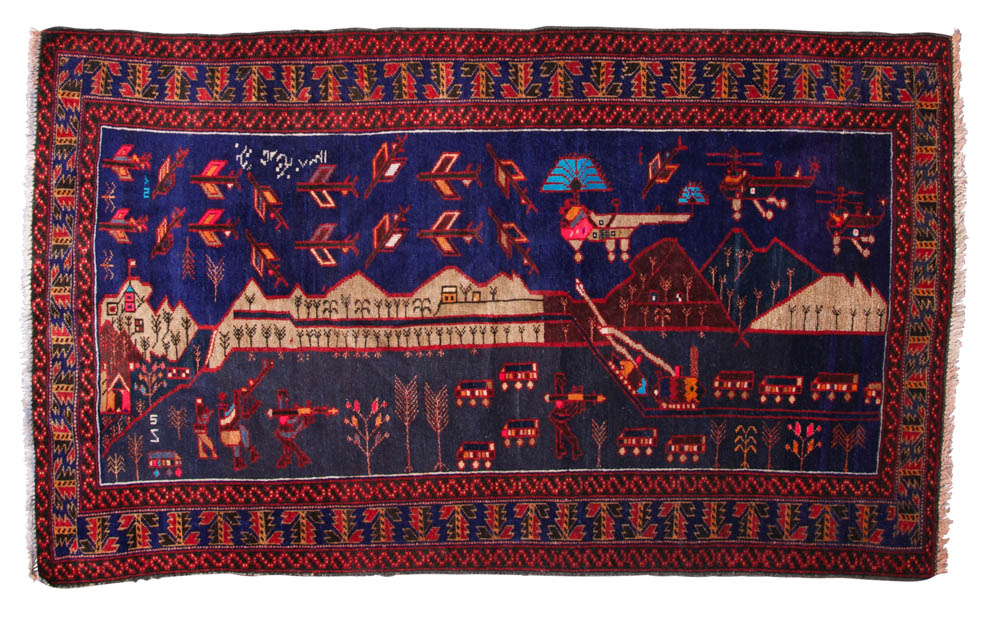
Battle for Bagram , Taymani or one of the other Chahar Aimaq tribes in West Afghanistan, 90 cm x 150 cm (approx. 2′ 11″× 4′ 11″). This horizontal pictorial rug shows a mountain range with isolated buildings being attacked from the air by enemy troops. According to the inscription, it depicts the attack on Taliban emplacements in Bagram in October/November 2001. The night sky is studded with airplanes and attack helicopters; the large helicopter with double rotors and a blue air vortex seems to have been hit by an anti-aircraft cannon – as the bright pink colour suggests. In the foreground you can see the Afghan defence fighters armed with bazookas. An anti-aircraft cannon appears next to military vehicles.
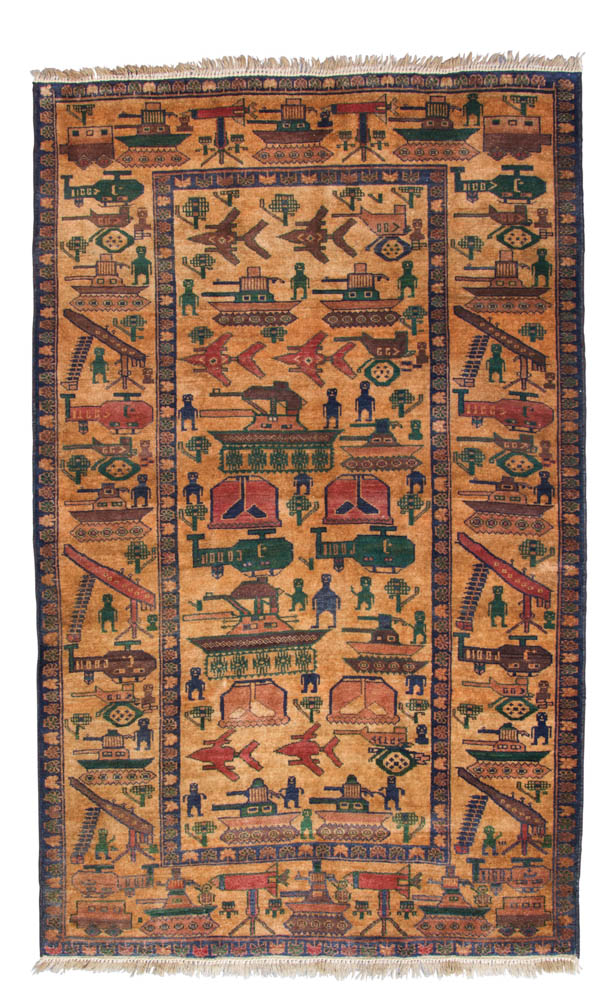
War in the desert, Herat/West Afghanistan, 190 cm x 116 cm (approx. 6′ 3″× 3′ 10″). Both in the centre field as well as in the wide border, attack helicopters, fighter-bombers, various types of tanks, armoured scout vehicles, anti-tank guns, and hand grenades are shown on a yellowish-brown desert ground. In between there are isolated unarmed people, apparently Afghans, who are at the mercy of the enemy power and its superior weapons. Other figures are shown sitting down operating cannons and anti-tank guns to defend themselves. This rug illustrates the totality of war, which has now been raging in Afghanistan for more than three and a half decades since the first armed conflicts during the Saur Revolution in 1978.
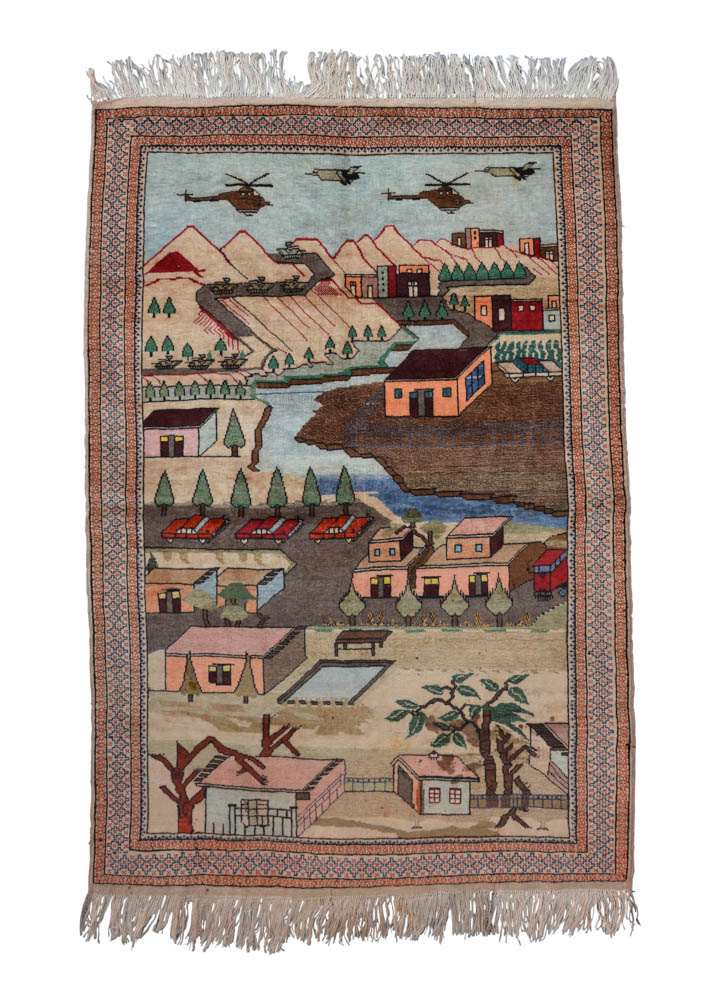
Military offensive in the Panjshir Valley, West Afghanistan , 188 cm x 125 cm (approx. 6′ 2″× 4′ 1″). This rug very clearly shows a convoy of tanks making its way into the mountains. It could be the advance into the Panjshir Valley in northeast Afghanistan, which was heavily fought over during Soviet occupation. Attack helicopters accompany the offensive in the air. A bloody trail running off the road of tanks leaves a chilling impression. There must have been an exact template for this pictorial rug, which features buildings drawn in perspective. The piece is mostly likely from an urban studio and not from the loom of a nomad family. The form and style resemble a naive painting. It is possible that this rug was made during the war with the Soviet Union in a workshop where Italian artist Alighiero Boetti had his rug designs made.
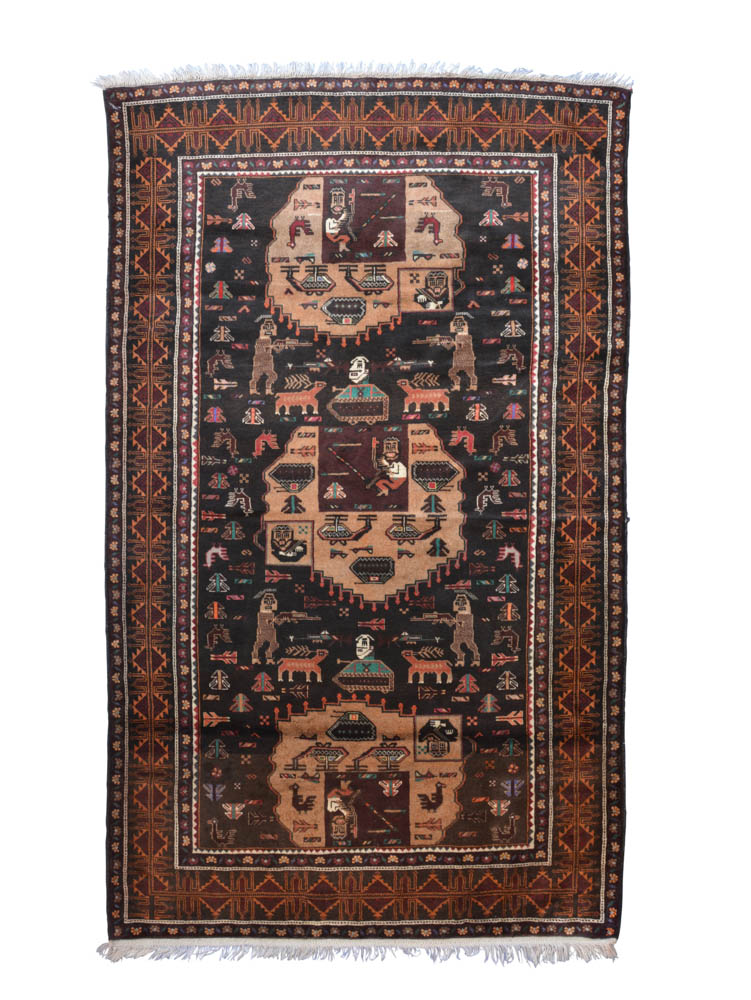
Attack and defense , Baluch, 203 cm x20 cm (approx. 6′ 8″× 3′ 11″). In addition to having small, stylised scattered motifs, rugs made in the Baluch tradition often have animal figures as well as depictions of people. In this piece these multi-coloured depictions on a dark ground are grouped around three medallion-like designs that are also filled with pictorial motifs on a light brown ground. This separation of figures onto dark and light surfaces is also found in other war rugs made in western Afghanistan. The comic-like figures of fighters are positioned next to tanks and helicopters and seem to be operating military equipment. They also appear as tank drivers. The composition and play of colours in this war rug are unusual.
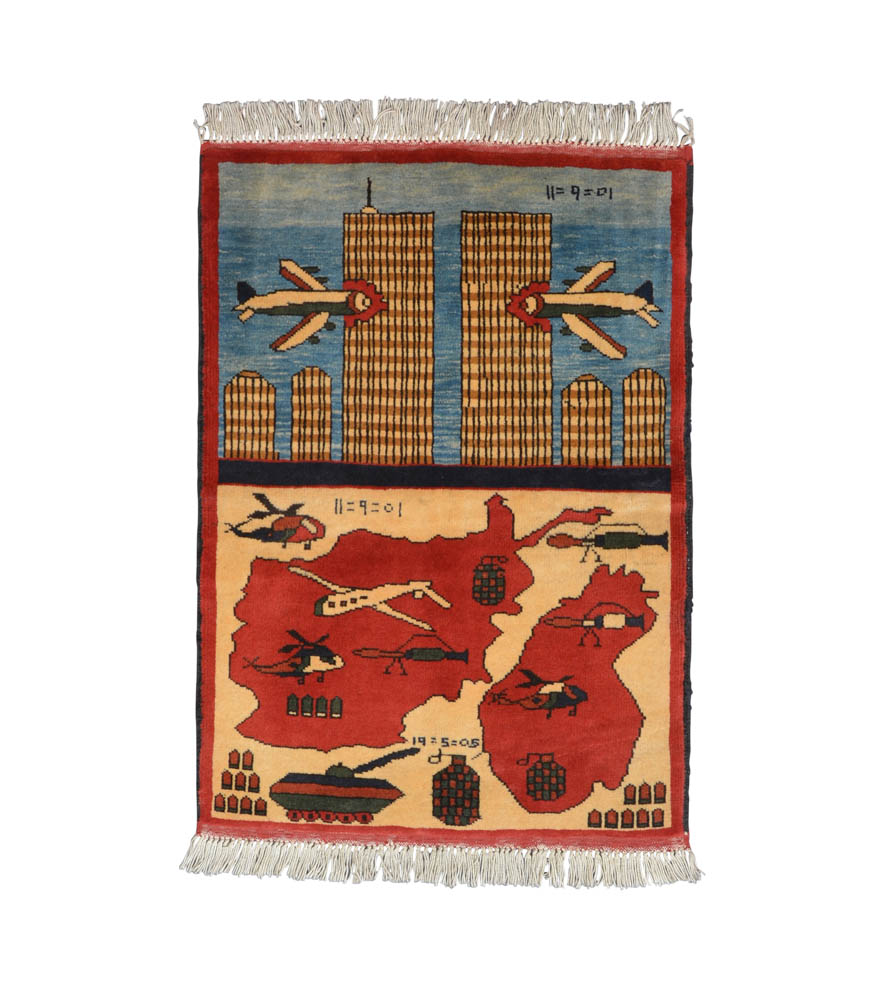
Attack on the Twin Towers with maps. Probably from an Afghan refugee camp in Pakistan, 96 cm, x 67 cm (approx. 3′ 2″×2′ 2″). This pro-American propaganda rug was made in a practical souvenir format. The top half illustrates the devastating attack on 11 September 2001, as two airplanes crash into the Twin Towers in New York. The bottom half shows a map of Afghanistan next to a – comparatively speaking – much smaller map of Pakistan. The two countries are depicted with images of a tank, an airplane, helicopters, and other military equipment. The design of the pictorial rug is relatively plain; the glaring colours have a signal effect. To this day, rugs with the 9/11 theme are commercial products meant to be sold to soldiers, journalists, and development experts. In this case they serve as propaganda for the war against al-Qaida and the Taliban as retribution for the attack in New York.























Comments [0] Sign in to comment